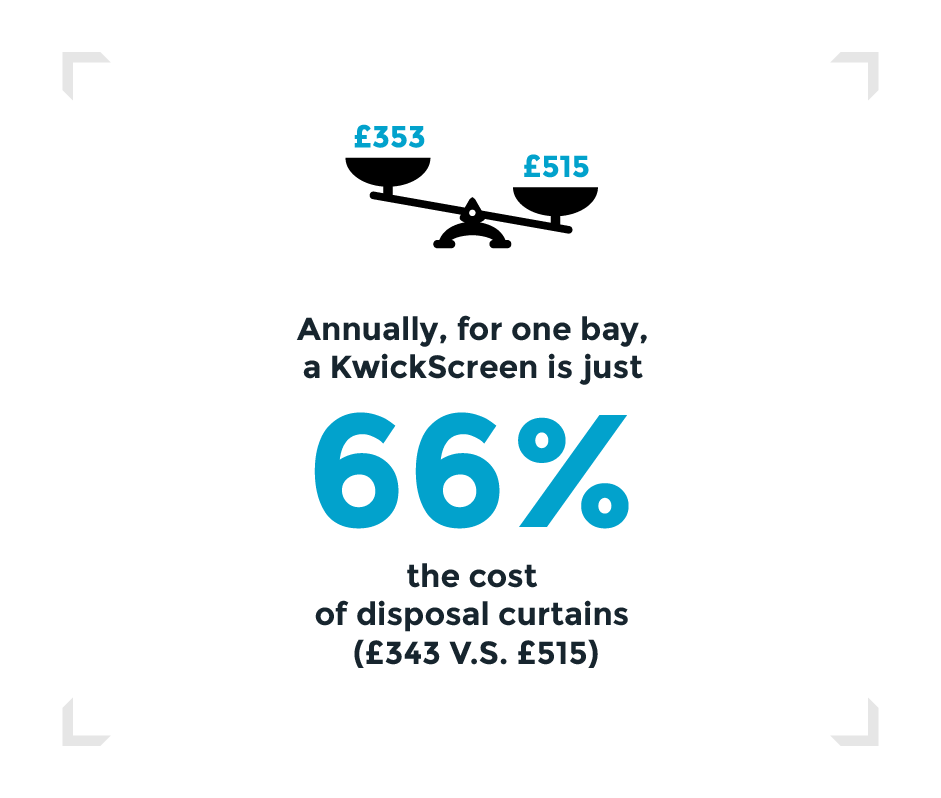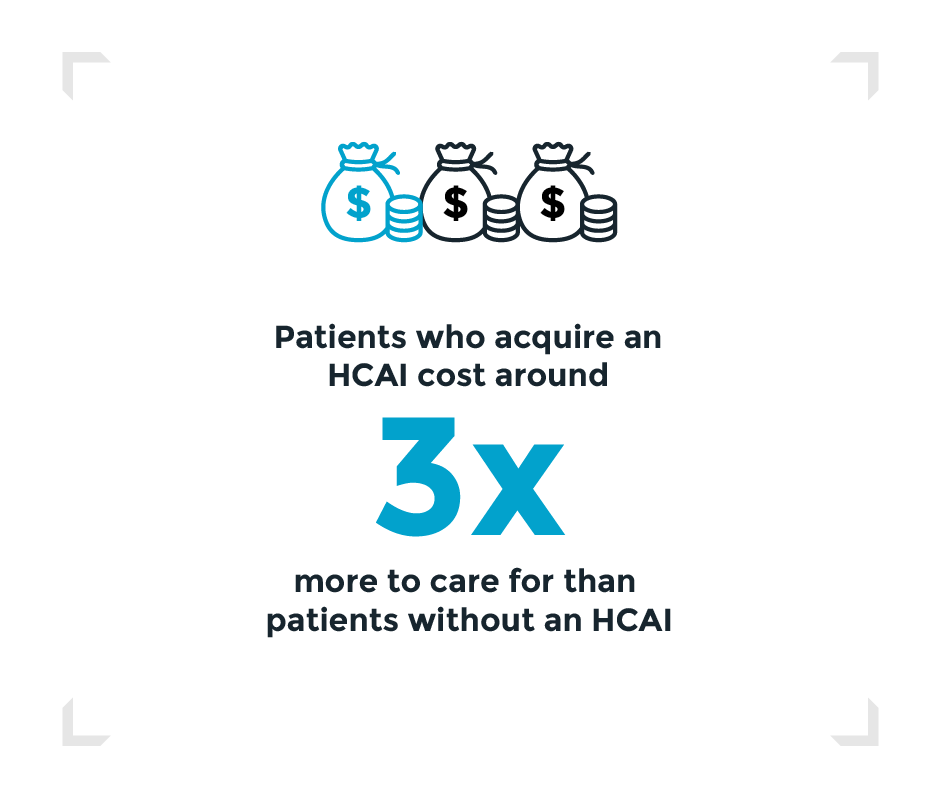Want to Save Money? Take a look at KwickScreen!
What is the most common partition between hospital beds in the UK? Curtains. What also harbours bacteria, is hard to clean and costs the NHS billions per year? Yes, you guessed it. A hospital curtain.
So, how can you improve infection control whilst also saving money during this difficult economic period?
At KwickScreen, our products provide a more cost-effective, sustainable and safer alternative to hospital curtains. Here are some examples of how you can save money with a KwickScreen.
Fabric Curtains vs KwickScreens
Each wash and re-installation of a fabric curtain costs the NHS £24. However, cleaning a KwickScreen three times a week with two wipes will leave the NHS with an annual operational cost of £199 for up to 5 years. This includes materials and labour costs. The screens can also be washed at the bedside, removing the additional re-installation cost. If we estimate that a fabric curtain gets washed every week, a KwickScreen works out significantly cheaper per year (£199 vs £1,248).
Disposable Curtains vs KwickScreens
The above doesn’t even take into account disposable curtains. A KwickScreen can last 5+ years, significantly reducing waste going to landfill, in addition to labour costs required to procure, install, remove and dispose of these disposable curtains every week or so. In fact, a KwickScreen remains the most competitive option, even if a curtain is changed at the less hygienic rate of once every three weeks. For one bay, a KwickScreen has an annualised cost of only 66% of that for disposal curtains (£343 vs £515) and a 6-bed ward of KwickScreens would save you £2,148.
Hospital Acquired Infections
Aside from the cost of the curtains themselves, curtains are significantly harder to clean than a KwickScreen. Using CFU/25cm² (Colony Forming Unit) data, it was found that there is 8x more bacteria on curtains than on a KwickScreen, leading to a significantly increased risk of hospital acquired infections (HAIs) with curtains. HAIs cause an additional expense of up to £2.7bn (UK)/ $4.5bn (US) - a cost that can be significantly reduced by creating a bed bay using KwickScreens. This high cost accounts for HAI treatments, the increase in patient time in hospital by an average of 9 days and the subsequent shortage of staff due to infection spread.
Artwork
Finally, a KwickScreen can be printed with a range of our carefully selected artwork. Many studies have shown that artwork can improve recovery times whilst also improving the mental health of patients and healthcare workers. The shorter the recovery time, the lower the labour costs per patient and the lower the chance of the patient acquiring a HAI, reducing its associated costs.
If you are interested to know more about how you can save money with a KwickScreen, take a look at our Sustainability Report.
Overall, KwickScreens are an obvious choice to save money in your healthcare space whilst improving sustainability, patient care and infection control.




